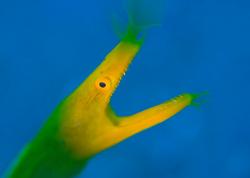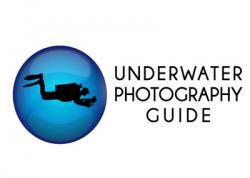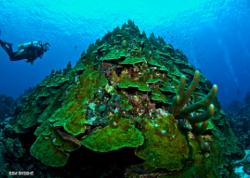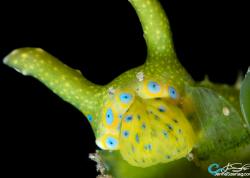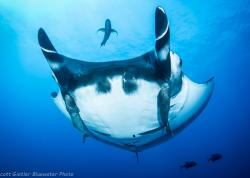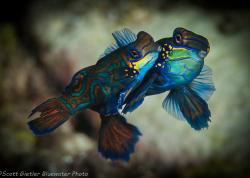Underwater Photography for Beginners
This is a “quick start” guide for those of you who are new to underwater photography. If you’ve taken some underwater photos before, you might want to skip this but if you are just starting out with a point and shoot here are the basics. If you haven’t purchased a camera or housing yet, you can take a look at the Underwater Equipment section or contact us directly at our partner site Bluewater Photo.
If you want to take a live online class, you should visit Bluewater University.
How To Use The Underwater Photography Guide
UWPG is a vast resource for improving your underwater photography, whether taking a camera into the water for the first time or a seasoned veteran looking for inspiration.
Use the column on the left or the menu bar at the top to navigate through the chapter you're interested in. We've also placed links throughout each page, suggesting further reading or to address in detail something we mention in the article. Easy as that.
Quick Links To Articles
Underwater Photography Basics | Camera Basics
Using your Camera Modes | Great Underwater Photos without a Strobe
Getting Great Colors | Image Sharpness | Lens Basics
Camera Settings | Limits of a Compact Camera
Underwater Photography Basics
If you are just starting out, review the Underwater Photography Basics page. It includes great 'how-to' tips and underwater photography definitions. You can also review the explanation of lens terms such as focal length, zoom, macro, wide-angle, and telephoto. And camera terms - shutter, f-stop, aperture, white-balance to get started.
For a quick summary of all of the terms, visit the Underwater Photography Glossary.
Read Underwater Photography Tips for a complete list of 100 valuable tips for underwater photographers.
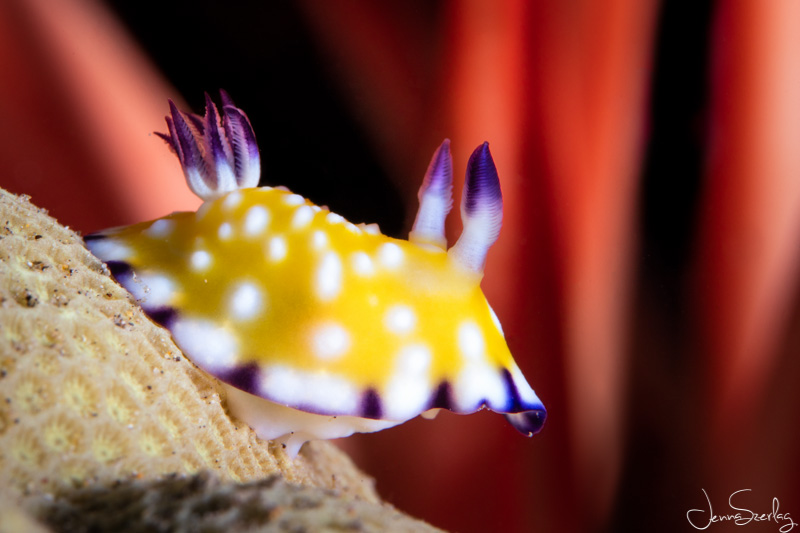
Helpful Resources for Beginner Photographers
Now that you know the basics, welcome to the world of underwater photography! Once you’ve done a couple dives, and read your camera manual, you can take time to read the rest of this guide. The following articles will be most relevant for a first-time underwater photographer.
Most Relevant Articles For First Time Underwater Photographers
Choosing Your Underwater Camera
If you have yet to purchase your underwater camera the Best Underwater Camera Guide features popular underwater cameras available today in select categories of camera types. Visit the Bluewater Photo Store Buyer's Guide for an in depth list and advice.
Ready To Try Underwater Photography?
Great, now you have an underwater camera and a housing, lets get in the water! But first, please make sure you are comfortable with your diving skills and buoyancy. Using a camera can be distracting, and it can be too easy for a new diver to crash into the reef, or worse, float to the surface without knowing it.
Before going underwater, it really helps to use your camera indoors, in a dimly lit room. Take some photos with the camera inside the housing, macro mode, flash on. Take photos of some small objects, and see how your photos come out. Test out the range of the camera with macro mode on and off.
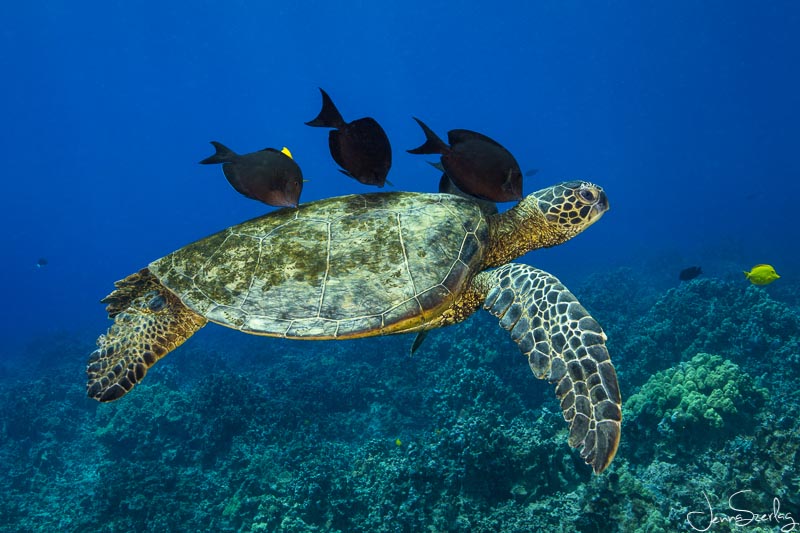
First Time Advice For Underwater Photographers
Ok, if you’re ready now to go underwater, here’s what you need to know initially:
1) For most photos (within 3-4ft), you will need the flash on. Make sure your flash is set to “forced flash”, not “auto-flash”. The flash will add color to your shots, otherwise they will look blue.
2) For most photos, you’ll want to be in macro mode. Learn how to turn macro mode on and off. You need to know the range of your macro mode. For most cameras this range will be 1-2 inches to 2 feet (2.5-5cm to 60cm). Any closer and you can’t take a photo. Further away, you must turn macro mode off. Make sure you are zoomed out (see #4)
3) Turn your internal flash on if you are within 2-3ft of a subject. Further than 3ft, turn the internal flash off. Unless the subject is really interesting and fast (shark, manta ray), I highly suggest getting within 3ft of the subject and using the flash. Otherwise, your photo will look blue. Use auto-white balance when you are using your internal flash. Don't use "cloudy" white balance or underwater mode with your flash/strobe, that will result in photos that are reddish-orange. Use auto, aperture priority, or full manual mode, depending on your comfort level with camera settings.
4) For now, keep your camera zoomed out (the widest setting). The reason why this is so important is because it affects how closely you can focus, especially in macro mode. If you zoom in, you can't focus as closely to the subject, and that defeats the purpose of macro mode. The better strategy is to get closer to the subject.
5) Try to get within a few inches of the subject. Try to get very low, at eye-level. Focus at the eyes. Try to get a photo of the subject facing you. Read more underwater composition tips.
6) If you are taking photos with the flash off (subjects more than 3ft away), also known as using ambient light, and you want better color, you must do 1 of two things – either use the underwater mode, or even better, do a manual white balance (custom white balance). Read the manual white balance section.
7) If you leave the flash on, and take a photo of a subject more than 2-3ft away, don’t be surprised if your photo has backscatter in it, unless you are shooting in exceptionally clear water. The only way to solve this is to get closer to the subject, and/or purchase an external strobe.
8) Remember – the closer you are, the better your color, contrast and sharpness will be. Try to “fill the frame” with your subject.
9) Your housing should have come with a "flash diffuser", although it might be built into the housing. This diffuser will be placed in front of your internal flash and will soften the light. Make sure you use it.
10) If you are having problems with the lag time between focusing on a subject and taking a shot, you can try "locking focus" by pressing halfway down on the shutter button, and then fine-tweaking your composition and making sure you keep the camera very still. This works better for non-moving subjects. Here's some more tips on achieving faster focus underwater.
11) You can leave your camera on "auto" mode for now, but if your camera has full manual mode (which you can set the shutter speed and aperture/f-stop independently of each other) - that's the mode you want to be using. Read the underwater settings chapter for more info.
12) Think about getting an external strobe, that's the best way to improve your photos. To use the strobe, you need to be able to control your camera's aperture, and control the power of the strobe.
13) Set up your camera, housing, and strobe indoors - and then take some practice shots indoors. Test your settings. Everything will work similarly to how it will work underwater, although indoors focusing will be easier, and your strobe will appear to be more powerful. I'm surprised how many people wait until they get underwater to try out settings.

14) Last, but not least - concentrate on the following two types of underwater shots.
Close-up shots in macro mode, forced flash, auto-white balance, spot-focus, with the subject no more than 5-6 inches away. Aperture priority (AV) mode if available, F8, otherwise program mode.
Scenic coral/reef shots several feet away, macro mode off, flash off, custom white balance, Evaluative (matrix) metering, only in shallow sunny water (25ft or less). Aperture priority (AV) mode if available at F2.8, otherwise program mode.
Go take some shots, and good luck!
Further Reading
Looking for an Underwater Camera? Check Out Bluewater Photo's Camera Guides:
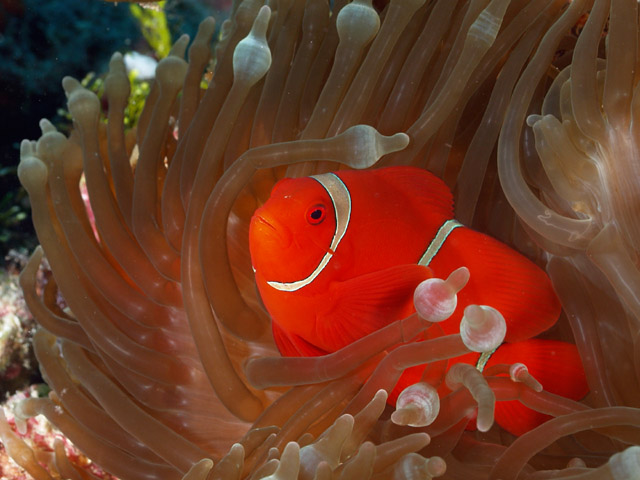
RECOMMENDED ARTICLES
SUPPORT THE UNDERWATER PHOTOGRAPHY GUIDE:
The Best Service & Prices on u/w Photo Gear
 Visit Bluewater Photo & Video for all your underwater photography and video gear. Click, or call the team at (310) 633-5052 for expert advice!
Visit Bluewater Photo & Video for all your underwater photography and video gear. Click, or call the team at (310) 633-5052 for expert advice!
The Best Pricing, Service & Expert Advice to Book your Dive Trips
 Bluewater Travel is your full-service scuba travel agency. Let our expert advisers plan and book your next dive vacation. Run by divers, for divers.
Bluewater Travel is your full-service scuba travel agency. Let our expert advisers plan and book your next dive vacation. Run by divers, for divers.





